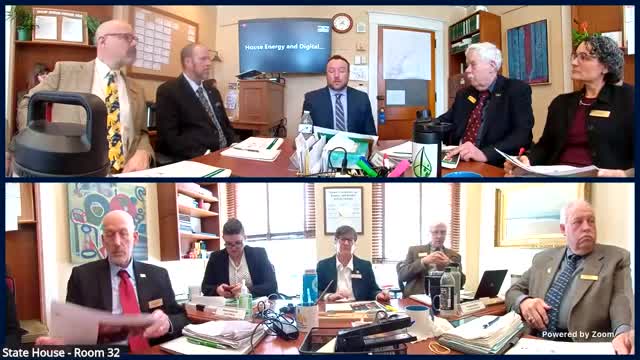Rochester explores microgrid solutions for urban energy systems
March 29, 2025 | Environment & Energy, HOUSE OF REPRESENTATIVES, Committees, Legislative , Vermont
This article was created by AI summarizing key points discussed. AI makes mistakes, so for full details and context, please refer to the video of the full meeting. Please report any errors so we can fix them. Report an error »

In a recent meeting held by the Vermont House Energy and Digital Infrastructure, discussions centered around the future of energy systems, particularly the role of microgrids and distributed energy resources. As representatives gathered, the atmosphere buzzed with the promise of innovation and sustainability.
One key point raised was the strategic placement of microgrids. Experts emphasized that these energy systems are best suited for densely populated areas, where the risk of disruptions can be minimized. "You want it to be in a dense area where you don't want a lot of stuff that could go wrong inside the microgrid," one speaker noted, highlighting the importance of location in energy planning.
In contrast, rural or heavily wooded areas may not be ideal for microgrids. Instead, the focus shifts to integrating distributed batteries in homes and businesses, allowing for a more resilient energy network. This approach not only enhances energy security but also empowers local communities to manage their energy needs effectively.
The conversation also touched on specific projects, such as the ongoing efforts in Downtown Rochester, where a microgrid initiative is underway. This project exemplifies the potential for localized energy solutions to address both current and future energy demands.
As the meeting concluded, it was clear that the path forward involves a careful balance of technology and geography, ensuring that Vermont's energy infrastructure evolves to meet the challenges of tomorrow. The discussions underscored a commitment to innovation, with a vision for a sustainable energy future that prioritizes both efficiency and community resilience.
One key point raised was the strategic placement of microgrids. Experts emphasized that these energy systems are best suited for densely populated areas, where the risk of disruptions can be minimized. "You want it to be in a dense area where you don't want a lot of stuff that could go wrong inside the microgrid," one speaker noted, highlighting the importance of location in energy planning.
In contrast, rural or heavily wooded areas may not be ideal for microgrids. Instead, the focus shifts to integrating distributed batteries in homes and businesses, allowing for a more resilient energy network. This approach not only enhances energy security but also empowers local communities to manage their energy needs effectively.
The conversation also touched on specific projects, such as the ongoing efforts in Downtown Rochester, where a microgrid initiative is underway. This project exemplifies the potential for localized energy solutions to address both current and future energy demands.
As the meeting concluded, it was clear that the path forward involves a careful balance of technology and geography, ensuring that Vermont's energy infrastructure evolves to meet the challenges of tomorrow. The discussions underscored a commitment to innovation, with a vision for a sustainable energy future that prioritizes both efficiency and community resilience.
View full meeting
This article is based on a recent meeting—watch the full video and explore the complete transcript for deeper insights into the discussion.
View full meeting